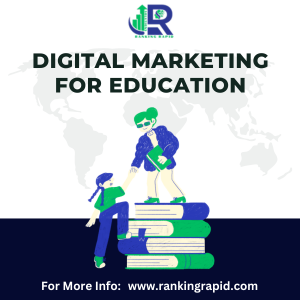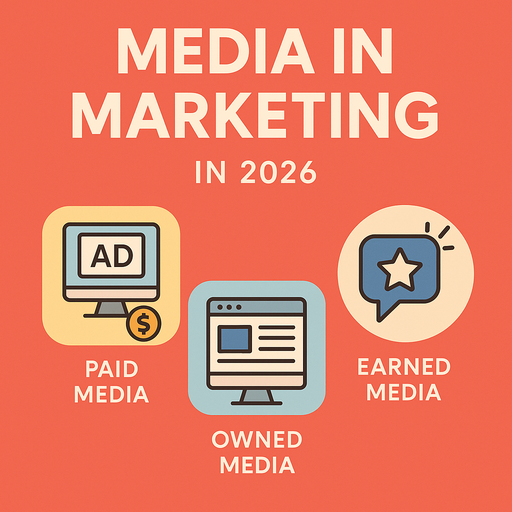In the ever-evolving world of business, the role of digital marketing is more critical than ever. It has transformed industries, reshaping how organizations reach and engage with their target audience. Two sectors where digital marketing has made a profound impact are education and travel & tourism. Both sectors thrive on customer interaction and rely heavily on building trust, delivering compelling experiences, and fostering strong relationships. This blog explores how digital marketing for education and digital marketing for travel and tourism is not just essential but also transformative.
Why Digital Marketing Matters for Education and Travel & Tourism
Digital marketing has fundamentally changed how businesses interact with their customers. Gone are the days when traditional marketing efforts, like print ads and billboards, were sufficient. Today, the internet is where most people search for information, make decisions, and share their experiences. As such, institutions in the education and travel sectors must adopt digital marketing strategies to stay relevant, competitive, and effective.

The Power of Digital Marketing for Education
Education is no longer confined to the four walls of a classroom or restricted to textbooks. It has evolved into a dynamic, interactive, and student-centered experience. Here’s where digital marketing for education comes into play, allowing institutions to not only showcase their offerings but also engage students in meaningful ways.
1. Reaching a Global Audience
Through digital marketing, educational institutions can transcend geographical barriers and reach a global audience. By utilizing online channels such as social media, search engines, and email marketing, schools, colleges, and universities can communicate with prospective students from different corners of the world. This global outreach enhances diversity within classrooms and opens up new opportunities for both institutions and students.
2. Enhancing Brand Awareness and Credibility
In a highly competitive education sector, institutions need to distinguish themselves from their competitors. With the right digital marketing strategy, educational brands can boost their visibility, showcase their unique selling points, and establish a credible online presence. A well-maintained website, active social media profiles, and positive online reviews all contribute to building trust and brand credibility.
3. Engaging with Prospective Students and Parents
The modern student and their parents are tech-savvy. They rely on digital platforms to search for courses, research colleges, and read reviews. Digital marketing for education allows institutions to engage with their audience through content marketing, social media campaigns, and personalized emails. These tools not only attract prospective students but also guide them through their decision-making process.
4. SEO and Content Marketing
One of the most important aspects of digital marketing for education is Search Engine Optimization (SEO). With effective SEO strategies, educational institutions can rank higher on search engine results pages (SERPs), increasing their chances of being discovered by potential students. Additionally, content marketing, such as blogs, webinars, and videos, can provide valuable information to students, making them more likely to choose a particular institution.
5. Leveraging Data and Analytics
One of the unique advantages of digital marketing is the ability to track and analyze the performance of various campaigns. Educational institutions can use data analytics to assess which strategies are working and where improvements are needed. This data-driven approach ensures better allocation of resources and more successful outcomes.
Digital Marketing for Travel and Tourism: A Game Changer
One of the most active industries in the world is the travel and tourism sector. It relies heavily on consumer behavior, trends, and experiences. With the rise of the internet and social media, travelers today plan their trips based on online recommendations, reviews, and inspiration from social media posts. Therefore, digital marketing for travel and tourism has become indispensable for companies looking to attract tourists and deliver memorable experiences.

1. Building a Strong Online Presence
For travel agencies, hotels, airlines, and other tourism-related businesses, having a solid online presence is crucial. A user-friendly website with engaging visuals, high-quality content, and easy navigation can significantly impact customer decisions. Whether it’s showcasing a beautiful destination or highlighting unique experiences, a well-optimized website can act as a powerful tool for travel businesses.
2. Social Media Marketing for Travel Inspiration
Social media platforms such as Instagram, Facebook, and Pinterest have become central to the travel industry. Many travelers discover new destinations and experiences through their social media feeds. By curating visually appealing content and engaging stories, travel companies can inspire wanderlust in their audience. Digital marketing for travel and tourism on social media not only drives engagement but also boosts brand recognition.
3. Search Engine Optimization (SEO)
Just like in the education sector, SEO is critical for travel and tourism businesses. A well-executed SEO strategy ensures that a travel business ranks high on SERPs when users search for travel-related information. Whether it’s searching for “best holiday destinations,” “cheap flights,” or “luxury resorts,” having strong SEO practices in place helps travel companies capture the attention of potential customers.
4. Content Marketing to Drive Engagement
Content marketing is a powerful tool in the travel industry. Blogs, videos, and guides that highlight popular destinations, travel tips, and cultural insights can captivate travelers and inspire them to book their next adventure. Not only does this content engage the audience, but it also boosts SEO rankings and builds credibility for travel brands.
5. Email Marketing for Personalization
Email marketing is an effective way for travel businesses to build personalized relationships with their customers. By segmenting their audience and sending targeted offers, travel companies can provide customized deals and information to specific groups of travelers. For example, a family-friendly resort might send special promotions to families, while an adventure tour company may target young, thrill-seeking travelers.
6. Leveraging User-Generated Content (UGC)
User-generated content is particularly powerful in the travel industry. Encouraging travelers to share their experiences through reviews, social media posts, or blog entries can serve as authentic endorsements for a travel brand. UGC fosters trust among potential travelers, as they are more likely to rely on the experiences of fellow travelers than on traditional advertising.
Key Digital Marketing Strategies for Both Education and Travel & Tourism
Now that we’ve explored the significance of digital marketing in both the education and travel sectors, let’s discuss some shared strategies that work well in both industries.
1. Mobile-Optimized Experiences
Mobile phones have become the primary devices for browsing, searching, and making decisions. Whether it’s a prospective student looking for information about a university or a traveler booking a flight, the chances are that they will do it on their smartphone. Therefore, it is essential for businesses in both sectors to ensure that their websites and digital platforms are mobile-friendly and offer a seamless user experience.
2. Paid Advertising (PPC)
Pay-per-click (PPC) advertising is an effective digital marketing tool that allows businesses to target specific keywords, demographics, and geographic locations. In education, PPC can help promote specific courses or programs to prospective students. In travel, it can drive traffic to websites by showcasing special deals or vacation packages. With precise targeting, PPC campaigns can generate high-quality leads for both sectors.
3. Influencer Marketing
Influencer marketing is an increasingly popular strategy in both education and travel. For the education sector, partnering with industry experts, educators, or alumni to promote the institution can enhance credibility. For travel companies, collaborating with travel influencers who share their experiences online can be an effective way to reach potential customers. Influencer marketing adds a layer of authenticity, as consumers tend to trust recommendations from individuals they admire or relate to.
4. Video Marketing
Video content is rapidly becoming one of the most engaging forms of online communication. Educational institutions can use video marketing to showcase their campuses, highlight testimonials from students and faculty, and provide virtual tours. Travel companies, on the other hand, can create compelling travel guides, destination showcases, and customer testimonials to inspire and inform potential travelers. Videos can be shared across multiple platforms, including YouTube, social media, and websites, providing wide exposure.
5. Local SEO for Geo-Targeting
Both education institutions and travel businesses can benefit from local SEO strategies. For education, local SEO helps attract students from nearby areas by ranking well in local searches. Travel companies can use local SEO to target specific regions and attract tourists who are looking for nearby travel experiences. Ensuring that business information (such as location, hours, and contact details) is accurate and up-to-date on Google My Business and other directories is essential for this strategy.
6. Retargeting Campaigns
Retargeting is a powerful strategy for both education and travel brands. Prospective students or travelers who have shown interest in a course or travel package might not make an immediate decision. Retargeting campaigns can help re-engage these potential leads by showing them relevant ads after they’ve left a website. This method helps to keep the brand top-of-mind and encourages conversions.
The Future of Digital Marketing for Education and Travel & Tourism
As technology continues to evolve, so do the opportunities for digital marketing in education and travel. Artificial intelligence (AI), augmented reality (AR), and virtual reality (VR) are all expected to play more significant roles in the future of these industries. For example, AI can help educational institutions provide personalized learning experiences, while AR and VR can offer immersive virtual campus tours or travel experiences.
In the travel sector, AI can enhance customer service by providing 24/7 chatbots, while AR and VR can allow travelers to explore destinations virtually before they book. These innovations not only improve customer engagement but also set businesses apart from the competition.
Conclusion
In conclusion, digital marketing for education and digital marketing for travel and tourism are indispensable in today’s digital-first world. Both sectors have unique needs and challenges, but they share common strategies that can drive success. From building a strong online presence and engaging with audiences through content and social media to leveraging SEO, paid ads, and data analytics, digital marketing provides countless opportunities for growth and customer engagement.








